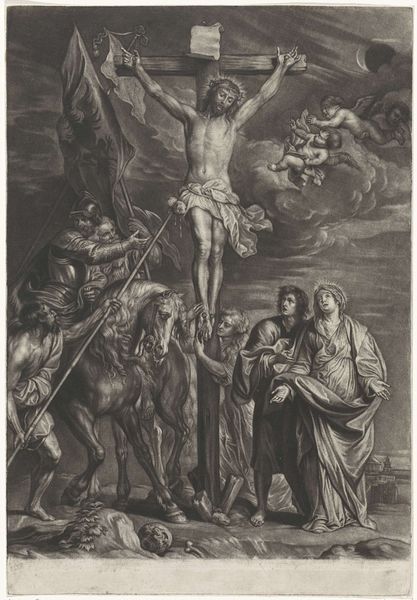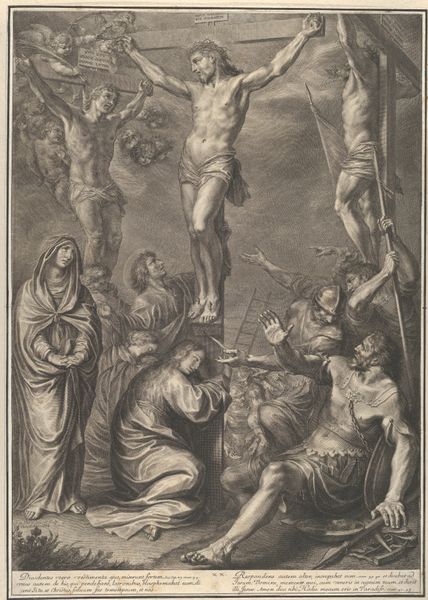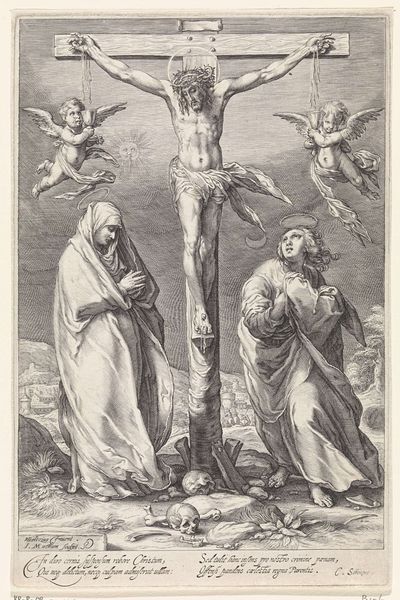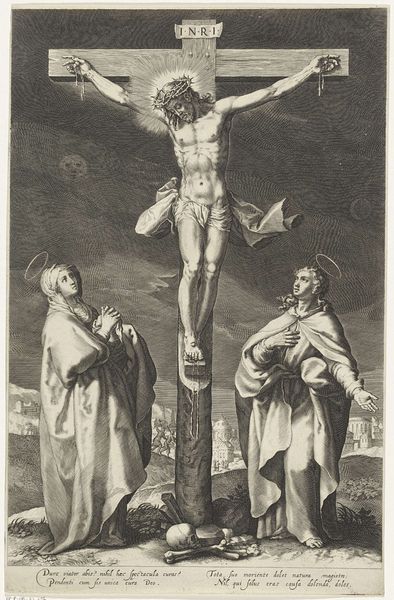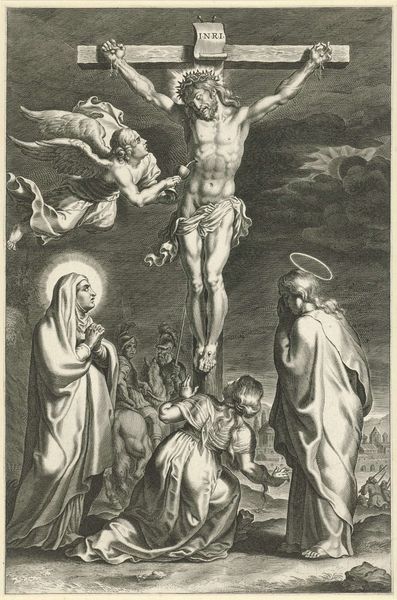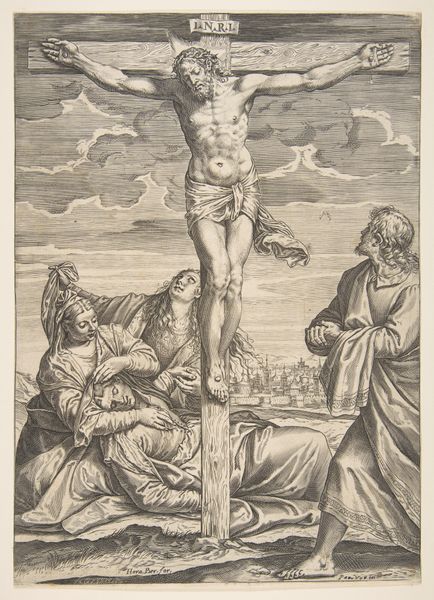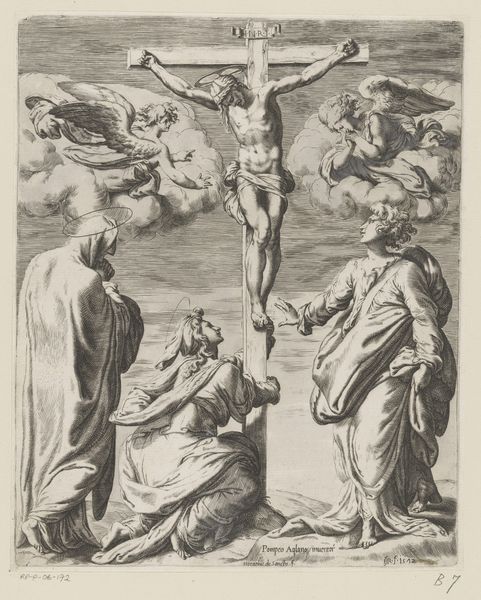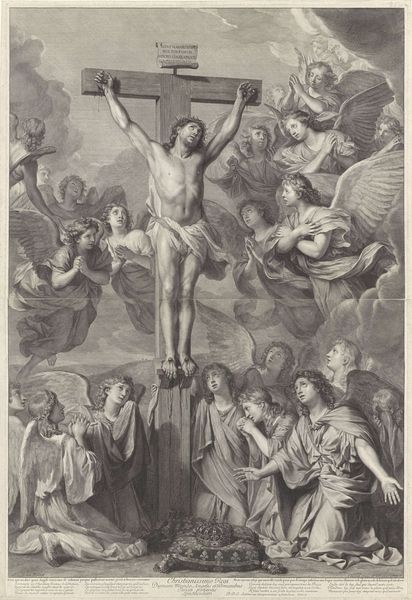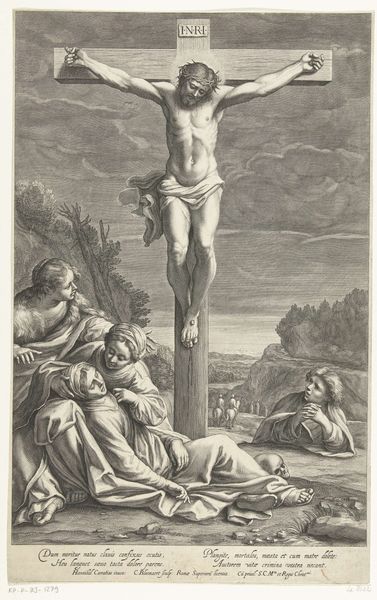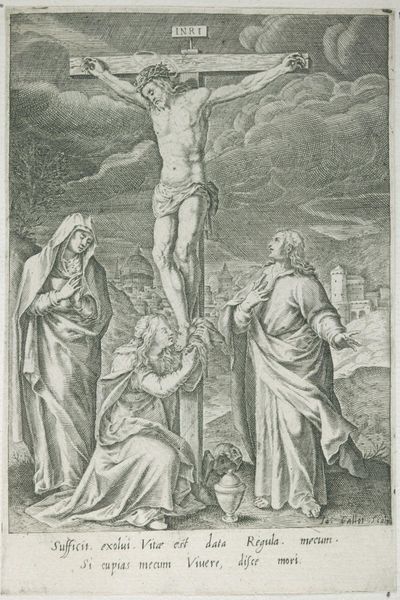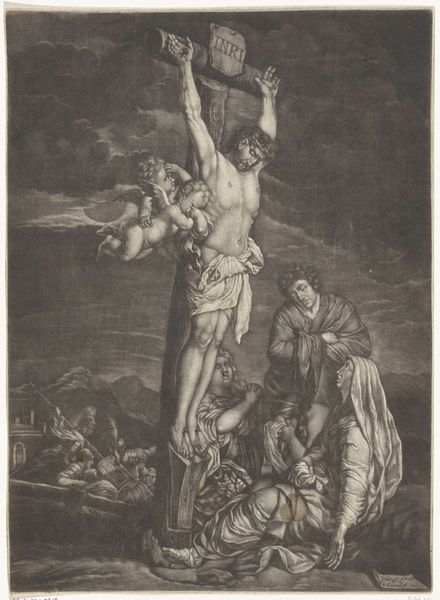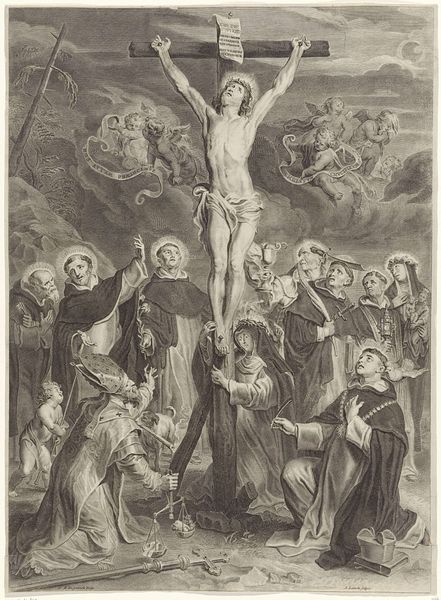
Christus aan het kruis met Maria en Maria Magdalena en Johannes de Evangelist en Franciscus van Assisi 1623 - 1660
0:00
0:00
pieterdebailliu
Rijksmuseum
engraving
#
baroque
#
figuration
#
line
#
history-painting
#
engraving
Dimensions: height 517 mm, width 357 mm
Copyright: Rijks Museum: Open Domain
Curator: This is "Christus aan het kruis met Maria en Maria Magdalena en Johannes de Evangelist en Franciscus van Assisi," or "Christ on the Cross with Mary and Mary Magdalene and John the Evangelist and Francis of Assisi." It's an engraving dating sometime between 1623 and 1660, currently held at the Rijksmuseum, created by Pieter de Bailliu. Editor: My initial reaction is the density of detail. The figures are writhing in very dramatic ways, all centered on Christ on the cross; the expressions alone suggest suffering, with an element of the theatrical. Curator: Yes, theatrical is a very apt term for Baroque art. Look at how De Bailliu utilized the engraving process to render the scene. Note the layering of lines creating the shading to build the volume and musculature of Christ’s body, and consider the laborious task of its production. Editor: Indeed. I'm curious about the engraving's function and dissemination at the time. Was it intended for devotional purposes, wider public consumption, or perhaps as a study for aspiring artists wanting to grasp complex religious iconographies? It definitely puts the role of printmaking into a whole other dimension, allowing people to contemplate the image. Curator: That's an excellent point, it certainly served all of these purposes. Reproductions like these disseminated ideas and allowed artists like De Bailliu, in this instance based on a painting by Peter Paul Reubens, to reach wider audiences that paintings could never achieve. Think of the cost implications in an age of aristocratic patronage versus the burgeoning merchant and artisanal classes and the demand they might exert for access to imagery. Editor: Considering this historical setting, this particular visual language served a powerful function. Baroque art served to support and spread Christian ideologies. Notice how De Bailliu directs our gaze upwards toward Christ through composition, inviting the viewer to engage emotionally and spiritually. The scale and medium allowed more of a participation by diverse viewing publics in religious subject matters previously enjoyed mainly by elite members of society. Curator: Yes, the choice of the subject combined with the possibilities availed by print production, enabled a certain degree of visual democratization. We are speaking here about opening the artistic space and experience beyond its aristocratic origins, shifting paradigms by addressing social tensions through the agency of imagery and objects. Editor: Looking at this again, I'm struck by how the artist manipulated a reproducible media to establish meaning during social-cultural conflicts that shifted society from an exclusive arena for elite stakeholders towards a public and political theater. Curator: Exactly, which is where the material, social and historical value of such artwork comes from and why they maintain such an attraction. Editor: And I now grasp the powerful ways in which an art piece can take us beyond mere aesthetic appreciation to thinking through how knowledge production impacts wider viewership.
Comments
No comments
Be the first to comment and join the conversation on the ultimate creative platform.
